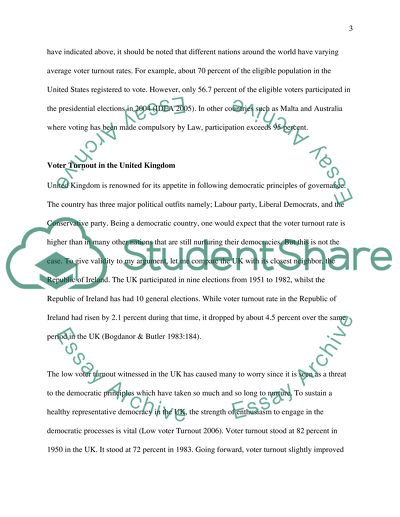Cite this document
(“The Problem of Low Voter Turnout in the United Kingdom Article”, n.d.)
Retrieved from https://studentshare.org/sociology/1525161-the-problem-of-low-voter-turnout-in-the-united-kingdom
Retrieved from https://studentshare.org/sociology/1525161-the-problem-of-low-voter-turnout-in-the-united-kingdom
(The Problem of Low Voter Turnout in the United Kingdom Article)
https://studentshare.org/sociology/1525161-the-problem-of-low-voter-turnout-in-the-united-kingdom.
https://studentshare.org/sociology/1525161-the-problem-of-low-voter-turnout-in-the-united-kingdom.
“The Problem of Low Voter Turnout in the United Kingdom Article”, n.d. https://studentshare.org/sociology/1525161-the-problem-of-low-voter-turnout-in-the-united-kingdom.


